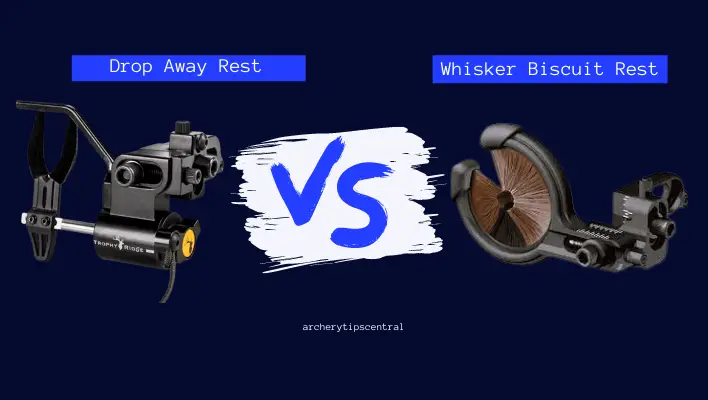The world of archery is filled with choices, and one of the most crucial decisions you’ll make is selecting the right arrow rest. The arrow rest is more than just an accessory; it’s a vital component that can significantly influence your shooting performance. Among the plethora of options available, two stand out: the Drop-Away and the Whisker Biscuit arrow rests. Each comes with its unique set of advantages and disadvantages, tailored to different styles and needs. This guide is designed to delve deep into the features, benefits, and drawbacks of these two popular arrow rests, helping you make an informed choice.
Table of Contents
- Understanding the Role of an Arrow Rest
- The Drop-Away Arrow Rest
- The Whisker Biscuit Arrow Rest
- Factors to Weigh Before Making a Decision
- Conclusion
Understanding the Role of an Arrow Rest
Before diving into the specifics, it’s essential to understand what an arrow rest is and why it’s so important. An arrow rest is a device affixed to your bow that holds the arrow in place until you release it. It serves as a stabilizing platform, ensuring that your arrow flies in a straight line, hitting the target with precision.
The Drop-Away Arrow Rest
Advantages
- Pinpoint Accuracy: One of the most significant benefits of using a Drop-Away arrow rest is its unparalleled accuracy, particularly at longer distances. The design allows for minimal contact with the arrow, ensuring that it flies true.
- Broad Compatibility: Drop-Away rests are versatile, accommodating a wide variety of arrows, including those with larger fletchings.
- Reduced Friction: The Drop-Away design minimizes friction by dropping out of the way as the arrow is released, thereby maximizing speed and distance.
Disadvantages
- Technical Complexity: These arrow rests are more intricate, requiring a certain level of expertise for installation and adjustments. They also demand regular maintenance to function optimally.
- Higher Cost: Drop-Away rests are generally on the pricier side, making them a significant investment.
- Timing Sensitivity: The Drop-Away mechanism relies on precise timing. If not calibrated correctly, it can result in inconsistent shots, affecting your overall performance.
The Whisker Biscuit Arrow Rest
Advantages
- Ease of Use: Whisker Biscuits are incredibly user-friendly, making them an excellent choice for beginners or those who prefer a straightforward setup.
- Built to Last: These arrow rests are known for their durability, capable of withstanding the elements and the rigors of frequent use.
- Consistent Performance: Whisker Biscuits offer reliable performance, particularly at shorter distances, making them a solid choice for close-range shooting.
Disadvantages
- Limited Long-Range Accuracy: These rests are generally not as precise as Drop-Away rests when shooting at greater distances.
- Increased Friction: The design of the Whisker Biscuit creates more contact with the arrow, which can slow it down and affect its trajectory.
- Narrower Versatility: Whisker Biscuits may not be compatible with all types of arrows, particularly those with larger or more delicate fletchings.
Factors to Weigh Before Making a Decision
- Your Skill Level: If you’re a novice, the simplicity of a Whisker Biscuit might be more appealing. On the other hand, seasoned archers may find the precision of a Drop-Away rest more to their liking.
- Budget Constraints: Whisker Biscuits are generally more budget-friendly, while Drop-Away rests can be a more significant investment.
- Maintenance Willingness: If you’re not keen on spending time on regular upkeep, the low-maintenance Whisker Biscuit could be a better fit.
- Shooting Environment: Consider where you’ll be shooting—whether it’s a controlled range or the great outdoors—as this could influence your choice.
Conclusion
The decision between a Drop-Away and a Whisker Biscuit arrow rest boils down to your specific needs, skill level, and preferences. Both have their merits and shortcomings, and understanding these can help you make a choice that will most positively impact your archery experience. Take into account factors like your skill level, budget, and willingness to maintain the equipment, and you’ll be well on your way to making an informed decision.

